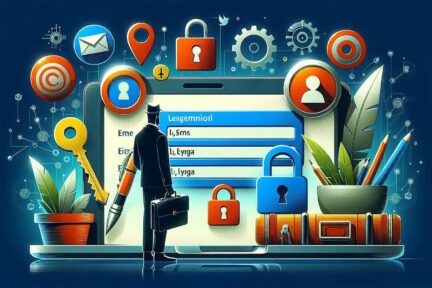One of the most difficult types of attacks to detect are those performed by insiders. An “insider” would be anyone with legitimate access to your company network and data. This would be via a login or other authorised connection.
Because insiders have authorised system access, they bypass certain security defences auch as those designed to keep intruders out. Since a logged-in user isn’t seen as an intruder, those security protections aren’t triggered.
There are three troubling statistics from a recent report by Ponemon Institute that illustrate the importance of addressing this threat. Insider attacks are getting worse, taking longer to detect and becoming more extensive.
The report found that over the last two years:
Companies need to understand what makes up an insider threat. That’s the first step towards mitigation.
One reason that insider threats can be hard to detect is that there’s not just one kind. Employees, vendors, and hackers can all perpetrate insider security breaches. To further complicate detection, some may be malicious, and others accidental.
Here are the four main types of insider threats faced by company networks.
A sales employee that is leaving the company may decide to take all their contacts with them. This is a malicious theft of company data.
Another example of this type of insider attack is a disgruntled employee. They may be upset with their manager who just fired them and decide to do the business harm. They could plant ransomware or make a deal with a hacker to give over their login credentials for cash.
Some insider threats are due to untrained employees. They don’t mean to cause a data breach but may accidentally share classified data on a non-secure platform. Or they may use a friend’s computer to access their business apps being completely unaware of the security consequences.
Outsiders with access to your network are also a very real concern. Contractors, freelancers, and vendors can all constitute an insider breach risk.
You need to ensure that these third parties are fully reviewed. Do this before you give them system access. You should also allow your IT partner to review them for any data security concerns.
Compromised login credentials are one of the most dangerous types of insider threats. This has now become the #1 driver of data breaches around the world.
When a cybercriminal can access an employee’s login, that criminal becomes an “insider.” Your computer system reads them as a legitimate user.
Insider threats can be difficult to detect after the fact. But if you put mitigation measures in place, you can stop them in their tracks. Being proactive keeps you from suffering a costly incident. One that you may not know about for months.
Here are some of the best tactics for reducing insider threat risk.
When hiring new employees, make sure you do a thorough background check. Malicious insiders will typically have red flags in their work history. You want to do the same with any vendors or contractors with access to your systems.
Mobile devices now make up about 60% of the endpoints in a company. But many businesses aren’t using a solution to manage device access to resources.
Put an endpoint management solution in place to monitor device access. You can also use this to safelist devices and block unauthorised devices by default
One of the best ways to fight credential theft is through multi-factor authentication. Hackers have a hard time getting past the 2nd factor. They rarely have access to a person’s mobile device or another security authenticator.
Couple this with password security. This includes things like:
Training can help you mitigate the risk of a breach through carelessness. Train employees on proper data handling and security policies governing sensitive information.
Once someone has user access to your system, how can you catch them doing something wrong? You do this through intelligent network monitoring.
Use AI-enabled threat monitoring. This allows you to detect strange behaviours as soon as they happen. For example, someone downloading a large number of files, or someone logging in from outside the country.
A layered security solution can help you mitigate all four types of insider threats. We can help you with a robust yet affordable solution. Contact us today for a free consultation.
You need the best IT support in London. Technology is complicated and expensive. It’s so hard to maintain everything and know what to do when something breaks or goes wrong. IT problems can put a damper on your day. They’re frustrating, time-consuming, and seem like a never-ending cycle of issues.
Penntech’s average NPS score over 90 days is 84. The average Net Promoter Score (NPS) for IT Managed Service Providers (MSPs) can vary. Still, an NPS of around 50 is considered excellent in this industry, with scores above 70 exceptional and rare.
We offer our services on a trial basis for the first three months because we’re confident in our delivery and approach.
Penntech offers a wide range of IT services, from strategic project management to 24/7 remote support, ensuring all your IT needs are always covered.
We provide advanced cybersecurity measures and expertise, including penetration testing services and Cyber Essentials, to protect clients from cyber threats.
We offer Clients the ability to scale IT services up or down based on their needs. This flexibility is crucial for businesses that experience seasonal changes or rapid growth.
Other providers often enforce their preferred IT stack, but we don’t, as IT is not a one-size-fits-all solution.
We ensure our Clients’ business continuity through robust disaster recovery and backup solutions.
With experience in various verticals and industries, Penntech understands different businesses’ unique IT challenges and can provide customised solutions..
Contact us today or explore the range of support packages on offer.

Article used with permission from The Technology Press.

Business owners often have to wear many hats, from handling HR and marketing tasks to managing the finances. One task…

Cool Windows 11 Features That May Make You Love This OS
Microsoft released the Windows 11 operating system (OS) over a year ago. It was well-received mainly with reviews as stable…

6 Ways to Prevent Misconfiguration (the Main Cause of Cloud Breaches)
Misconfiguration of cloud solutions is often overlooked when companies plan cybersecurity strategies. Cloud apps are typically quick and easy to…

4 Proven Ways to Mitigate the Costs of a Data Breach
No business wants to suffer a data breach, but unfortunately, it’s difficult to avoid them in today’s environment. Approximately 83%…

The benefits of AI include advancing our technology, improving business operations, and much more. Adoption of AI has more than doubled…

Leading Password Managers for Personal and Business
We hope that your business is already considering a password manager system, but there’s still the matter of finding the…

What’s Changing in the Cybersecurity Insurance Market?
Cybersecurity insurance is still a pretty new concept for many SMBs. It was initially introduced in the 1990s to provide coverage for large enterprises. It covered things like data processing errors and online media.

What are the advantages of implementing Conditional Access?
It seems that nearly as long as passwords have been around, they’ve been a major source of security concern. Eighty-one…

Cybersecurity Review 2023: Top Threats and Trends
As we delve into 2023, the cybersecurity landscape has never been more dynamic and crucial to our digital lives. From…

Essential Cybersecurity Tips to Safeguard Your Digital
In today’s hyper-connected world, protecting your digital life is more crucial than ever. With cyber threats lurking around every corner,…

Cybersecurity Guidelines: Must-Know Tips!
In an increasingly digital world, protecting your online presence is more critical than ever. Cybersecurity breaches are no longer just…

Cybersecurity Steps to Secure Your Data
In today’s digital age, protecting your data is more critical than ever. Cyber threats are constantly evolving, and it’s crucial…

Cybersecurity: Navigating Emerging Threats and Opportunities
In today’s digital age, cybersecurity has become a critical concern for businesses and individuals alike. As technology continues to evolve,…

How Service Cloud Transforms Customer Experience
In today’s competitive business landscape, delivering exceptional customer experiences is paramount. Service Cloud, a powerful customer service platform, has revolutionised…

A Comprehensive Guide to Cybersecurity Audits for Businesses
In today’s digital age, cybersecurity is of utmost importance for businesses. Cybersecurity audits play a crucial role in protecting sensitive…

IT Service Management for Modern Businesses
In today’s digital age, IT Service Management (ITSM) has become a cornerstone for modern businesses. As companies increasingly rely on…

Essential Skills Every Cybersecurity Engineer Must Master
In the ever-evolving field of cybersecurity, engineers must arm themselves with a diverse array of skills to defend against the…